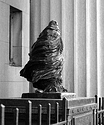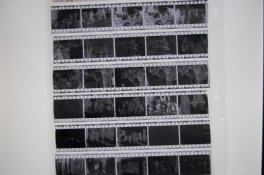h.v.
Member
I tried posting this on my Hexar thread, but no response. I'm really not sure where to put this as I don't know the root cause. 35mm, B&W film, and Exposure all seem like applicable forums.
Anyways, some of you may know about my recent purchase of a Konica Hexar (AF model). One thing I've noticed is that the scans from negatives often appear quite flat and bright. I know from testing with my Nikon's (and Yashica to a lesser degree) over the past 18 months that my scanner sometimes just scan things a bit flat. So I do minor levels adjustments to match prints, contacts, or indexes from the lab.
But with the Hexar, it seems more exaggerated and more often. I don't have access to optical printing, so I can't really test that way currently. I've tried ensuring that each time the Hex is set to -0.3 exposure. I'm used to doing a bit of underexposure on my SLRs, anyway. The strange thing is that I don't have this issue with colour, only B&W (including C-41 Ilford XP2).
Now, yesterday, I began processing my own B&W film. I did two rolls of HP5 in DD-X. One from the Nikon F90, one from the Konica Hexar. The F90 ones are generally fine in scans, a few aren't, but I'm used to that from before and know it's just the scanner. With the Hexar roll, however, almost every photo is overexposed and flat. Granted, it was a sunny winter day, lots of white snow and ice. But wouldn't that trick the camera into underexposure (higher shutter speed, thinking the scene is brighter than it is)?
Now I'm at a loss as to whether or not it's the scanner, the camera, or my processing. Is there any way to make it sharper and more contrasty with DD-X? Should I set the camera to -0.7 or -1.0 or more instead?
Feel free to move this to another forum if it turns out this subforum doesn't really work.
Anyways, some of you may know about my recent purchase of a Konica Hexar (AF model). One thing I've noticed is that the scans from negatives often appear quite flat and bright. I know from testing with my Nikon's (and Yashica to a lesser degree) over the past 18 months that my scanner sometimes just scan things a bit flat. So I do minor levels adjustments to match prints, contacts, or indexes from the lab.
But with the Hexar, it seems more exaggerated and more often. I don't have access to optical printing, so I can't really test that way currently. I've tried ensuring that each time the Hex is set to -0.3 exposure. I'm used to doing a bit of underexposure on my SLRs, anyway. The strange thing is that I don't have this issue with colour, only B&W (including C-41 Ilford XP2).
Now, yesterday, I began processing my own B&W film. I did two rolls of HP5 in DD-X. One from the Nikon F90, one from the Konica Hexar. The F90 ones are generally fine in scans, a few aren't, but I'm used to that from before and know it's just the scanner. With the Hexar roll, however, almost every photo is overexposed and flat. Granted, it was a sunny winter day, lots of white snow and ice. But wouldn't that trick the camera into underexposure (higher shutter speed, thinking the scene is brighter than it is)?
Now I'm at a loss as to whether or not it's the scanner, the camera, or my processing. Is there any way to make it sharper and more contrasty with DD-X? Should I set the camera to -0.7 or -1.0 or more instead?
Feel free to move this to another forum if it turns out this subforum doesn't really work.





 .
.



